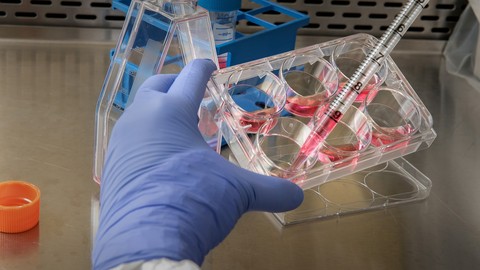
RNA Structure and Protein Synthesis MCQ (Bio Chemistry)
-
RNA Structure -
Protein Synthesis
- Anyone who wants to learn Bio Chemistry
- Advanced Bio Chemistry
- RNA Structure
- Protein Synthesis
Ribonucleic acid (RNA) is a polymeric molecule essential in various biological roles in coding, decoding, regulation and expression of genes. RNA and DNA are nucleic acids, and, along with lipids, proteins and carbohydrates, constitute the four major macromolecules essential for all known forms of life. Like DNA, RNA is assembled as a chain of nucleotides, but unlike DNA, RNA is found in nature as a single strand folded onto itself, rather than a paired double strand. Cellular organisms use messenger RNA (mRNA) to convey genetic information (using the nitrogenous bases of guanine, uracil, adenine, and cytosine, denoted by the letters G, U, A, and C) that directs synthesis of specific proteins. Many viruses encode their genetic information using an RNA genome
Some RNA molecules play an active role within cells by catalyzing biological reactions, controlling gene expression, or sensing and communicating responses to cellular signals. One of these active processes is protein synthesis, a universal function in which RNA molecules direct the synthesis of proteins on ribosomes. This process uses transfer RNA (tRNA) molecules to deliver amino acids to the ribosome, where ribosomal RNA (rRNA) then links amino acids together to form coded proteins
Protein biosynthesis (or protein synthesis) is a core biological process, occurring inside cells, balancing the loss of cellular proteins (via degradation or export) through the production of new proteins. Proteins perform a variety of critical functions as enzymes, structural proteins or hormones and therefore, are crucial biological components. Protein synthesis is a very similar process for both prokaryotes and eukaryotes but there are some distinct differences
Protein synthesis can be divided broadly into two phases – transcription and translation. During transcription, a section of DNA encoding a protein, known as a gene, is converted into a template molecule called messenger RNA. This conversion is carried out by enzymes, known as RNA polymerases, in the nucleus of the cell. In eukaryotes, this messenger RNA (mRNA) is initially produced in a premature form (pre-mRNA) which undergoes post-transcriptional modifications to produce mature mRNA. The mature mRNA is exported from the nucleus via nuclear pores to the cytoplasm of the cell for translation to occur. During translation, the mRNA is read by ribosomes which use the nucleotide sequence of the mRNA to determine the sequence of amino acids. The ribosomes catalyse the formation of covalent peptide bonds between the encoded amino acids to form a polypeptide chain
These questions will give you basic idea for Examination Preparation and/or interview on RNA Structure and Protein Synthesis.
Please Note:
- These questions are only for practice and understanding level of knowledge only. It is not necessary that these questions may or may not appear for examinations and/or interview questions
- In this practice test, because of large amount of questions (around 47 questions) some of questions may have repeated
- I had to put as 70% pass rate because there may also be wrong answers from my side
- Bio Chemistry
- RNA Structure
- Protein Synthesis



